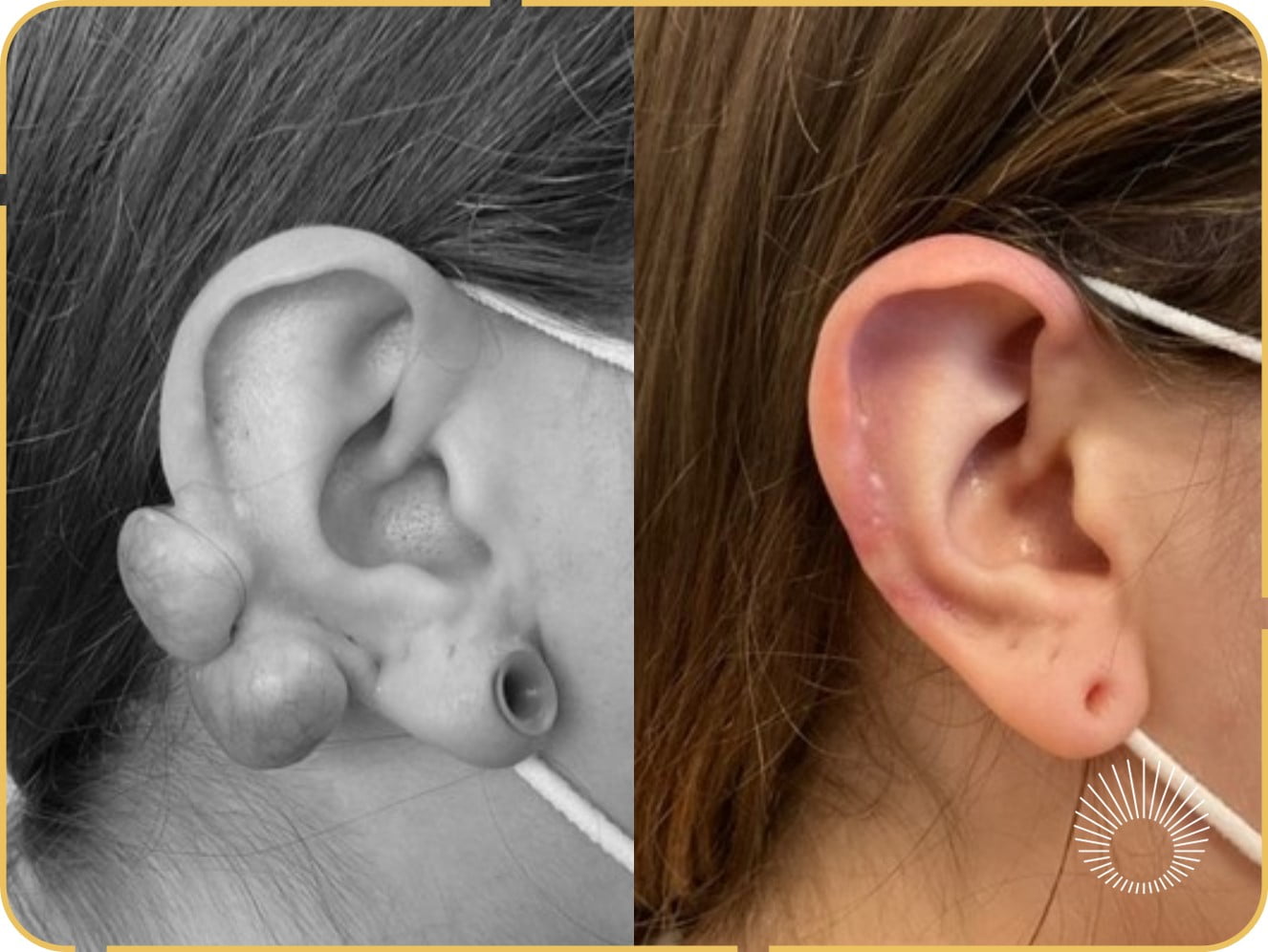Chronic infection of piercings often lead to keloid formation on the ears. This patient had two large keloids that had grown over several years. Shown 3 month after removal which was done in the office with local anesthetic. Total surgery time was about 20 minutes and she is thrilled!

Skin Lesions: Keloid Removal
The Basics
Keloid removal involves the surgical excision of keloids, which are overgrown areas of scar tissue that form at the site of skin injuries. This type of removal is typically recommended for larger keloids or those that have not responded to other treatments. The procedure entails cutting out the keloid and carefully closing the wound to minimize the risk of recurrence. Surgeons may also employ additional techniques, such as applying pressure dressings or steroid injections, to reduce the likelihood of the keloid returning. This approach is effective for keloids that cause discomfort, restricted movement, or significant cosmetic concern.
Who is a good candidate?
A good candidate for keloid removal is someone who has developed keloid scars—thick, raised areas of scar tissue that extend beyond the original injury or incision site—and seeks to remove or reduce them for aesthetic or medical reasons. These scars can result from various skin injuries, such as surgery, piercings, tattoos, burns, or acne, and can continue to grow over time.
Sara Surgery is a premier Plastic and Reconstructive Surgery provider in Morton Grove, Illinois, serving the greater Chicago area.


